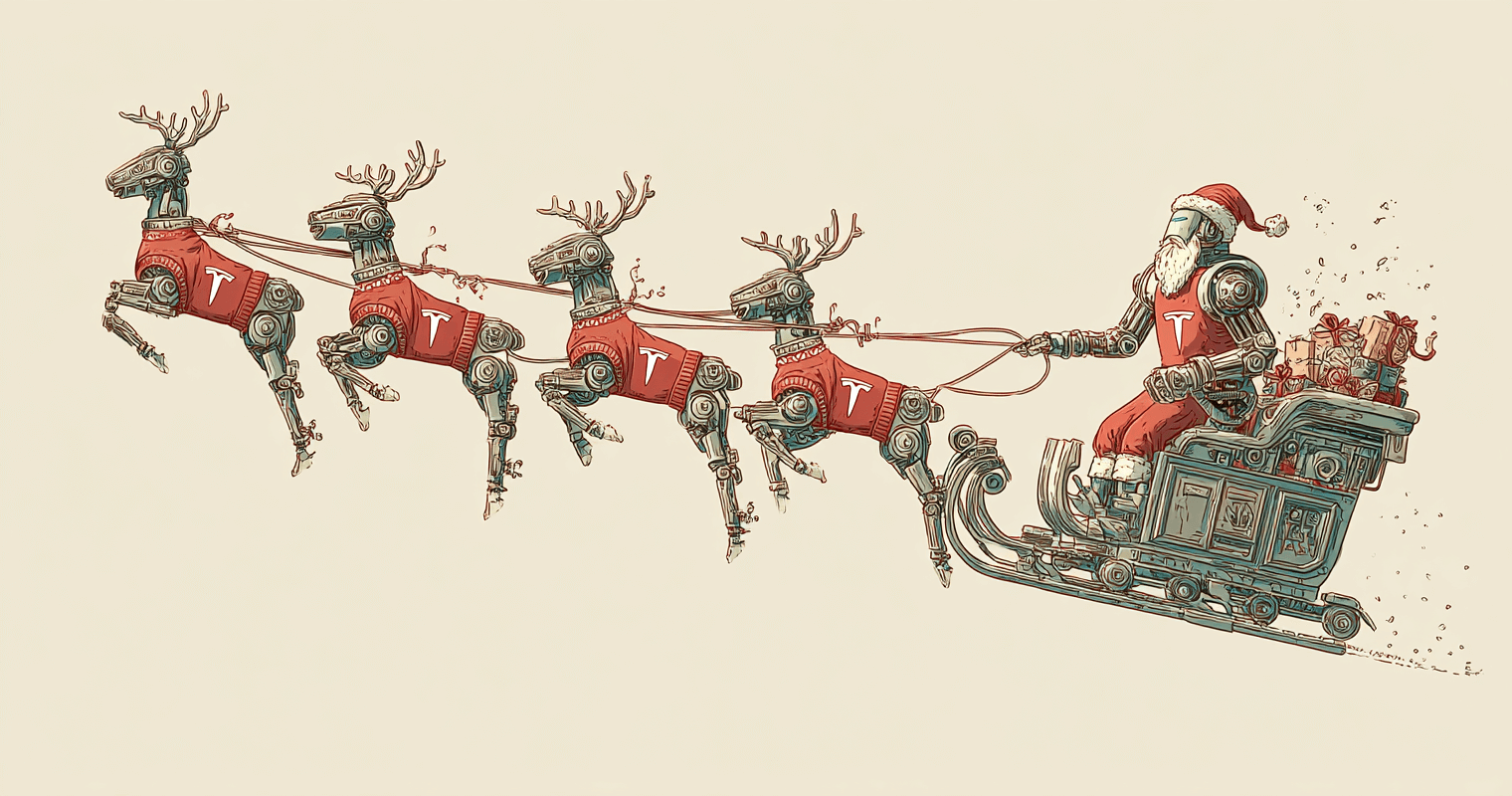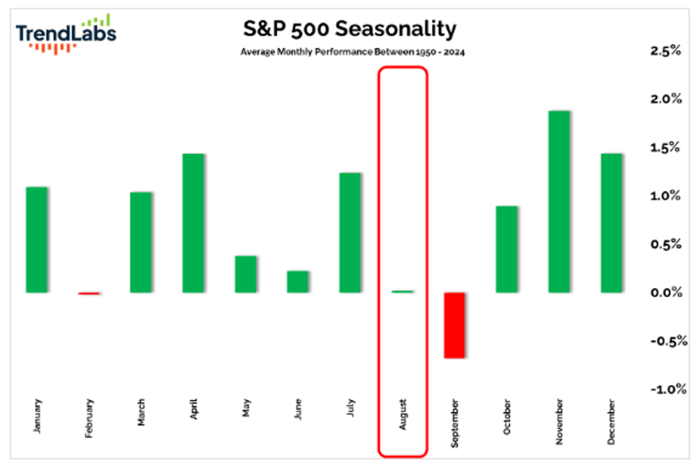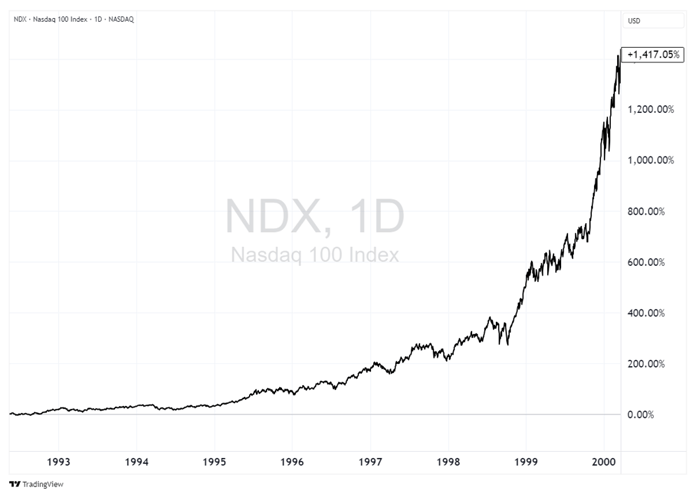
The King of AGI
When Elon Musk launched his newest company, xAI, in January 2024, most didn’t take him seriously…


Only now are we learning just how weak the labor market really is. And the odds of a Fed pivot just shot through the roof.

Managing Editors’ Note: Before we get to today’s issue from Near Future Report senior analyst Nick Rokke, I want to send you an opportunity from our friends over at The Opportunistic Trader.
Despite the positive headlines… and retail investors piling in… institutional players are quietly backing out. This disconnect has our colleague, Larry Benedict, on alert.
Larry’s seen his fair share of crazy markets. He knows the signs when things aren’t adding up, and markets can get erratic. But this market divergence doesn’t have to spell trouble for you. He’s got a plan for how to play it.
You can go here to automatically sign up to attend his Market Divergence Summit this Thursday, August 7, at 2 p.m. ET, where he’ll explain what’s driving this disconnect… and how you can profit.

It was the jobs report heard around the world.
Last Friday, the Bureau of Labor Statistics (BLS) dropped a bombshell. The U.S. economy supposedly only added 73,000 jobs in July. That’s far below the 100,000 expected.
But that wasn’t the real shock.
The gut punch to the markets came in the revisions. The BLS quietly slashed its prior estimates for May and June by a combined 258,000 jobs. That’s the largest two-month downward revision – outside of a pandemic – in more than 40 years.

Source: Reuters
Think about that.
For months, economists and policymakers have been making decisions based on faulty numbers… And only now are we learning just how weak the labor market really is.
Unfortunately, this isn’t a one-off.
Just last August, the BLS admitted it had overstated job growth from April 2023 to March 2024 by 818,000 jobs. That’s nearly 70,000 jobs per month. That’s not a rounding error. That’s a systemic failure and symbolic of the gross inaccuracy of the BLS data.
If this kind of mistake happened in the private sector, the leadership team would be shown the door. A total overhaul would follow, along with a modernized data collection and analysis process.
But this is the federal government. There’s an abundance of political motivations. So here we are.
And that raises the obvious question: Until the process is fixed, how can investors trust these numbers at all?
The truth is we can’t. And that’s why we’re always looking for the best data that we can rely on here at Brownstone Research.
My preferred measure? The ADP National Employment Report.
It draws from real payroll records at over 500,000 businesses that ADP provides payroll support for. It doesn’t rely on snail-mailed surveys or bureaucratic guesswork or “seasonal” adjustments. It’s digital. It’s factual. It’s timely. And it reflects what’s actually happening in the private economy.
ADP reported just 104,000 private jobs in July. That’s just about exactly the number that was expected.
But as we can see in the chart below, the hiring slowdown started in September 2024.

Source: Bloomberg
This brings us to the market-moving takeaway.
Would the Fed have already started cutting interest rates if this factual, weaker data had been the guide? We’ll never know. Again, there is a lot of politics involved.
But the odds of a Fed pivot just shot through the roof.
Before the report, traders gave the September rate cut just a 38% chance. By Friday afternoon, that number rocketed to 81%. And there’s now a 57% chance we see at least one cut before year-end.
If anyone wants to see up-to-date odds of a rate cut, the Chicago Mercantile Exchange tracks that here.
Rate cuts are all but locked in.
And here at Brownstone, we believe that lower rates will push the stock markets higher. And certain stocks will go up more than others.
Some readers wrote in after we talked about interest rates last week to remind us that falling interest rates aren’t always good for the stock market. Just look back to 2008–2009, they said. The Fed slashed rates to zero… and the market still collapsed.
We appreciate the feedback. And we know. We’re aware of the financial crisis and how that led to the introduction of ZIRP (zero interest rate policy).
Context is everything.
If the Fed cuts rates because the sky is falling, then sure, stocks aren’t going to react well. Rate cuts alone can’t save a collapsing economy or a massive overleveraged banking crisis.
But when the Fed cuts rates to preserve a growing economy, when it acts early, not late, those cuts become rocket fuel for stocks.
We’ve seen this playbook work before.
This is why Jeff has been pounding the table on rate cuts for the past year. The right time to cut is before the pain starts. That’s how we keep this economy stable and keep the market climbing.
Now, as for the short term…
We’re entering a seasonally weak stretch. August tends to be flat. September? Historically, the worst month of the year. We can see it clearly in the chart below.
Since 1950, the S&P 500 has delivered almost no gains in August. And September is the only month with consistent negative returns.

So, volatility is likely coming.
And with the Fed’s next big meeting set for September 17–18, we’ll likely see some choppiness and volatility before then. That’s completely normal.
But once the Fed moves, it’ll be off to the races. And we want to be fully positioned before that happens.
Now, here are my top three ways to profit from lower interest rates.
When interest rates fall, income becomes harder to find. And that’s when yield-hungry investors start flooding into high-yield assets.
That includes long-term bonds. As rates drop, their value rises.
Of course, there’s a caveat. Long-term yields are influenced not just by the Fed, but also by fiscal policy and confidence in the dollar.
And with the U.S. continuing to run massive deficits under the One Big Beautiful Bill Act (OBBBA), long yields may decline a bit more slowly. Or at least until the bond market feels that economic growth is catching up to the size of the deficit.
Another way to profit from the search for yield is with high-yield dividend stocks.
When rates fall, investors chase income. That chase leads them up the risk curve from bonds to equities. Dividend stocks become the new safe haven. That surge of capital tends to lift them fast.
It’s exactly why we recently recommended a company in The Near Future Report with a 7.4% dividend yield. It’s stable. It’s growing. And it’s absolutely essential to the AI infrastructure buildout. (Near Future Report subscribers can find that research right here.)
This company helps deliver power to AI data centers. Without it, those facilities don’t run. That makes it a key enabler of the most important technology trend of our time. This is a rare income play with massive tailwinds.
The second way to benefit from falling rates is to own companies in rate-sensitive industries – especially those that rely heavily on debt.
Think real estate. Think homebuilders.
Large, capital-intensive purchases and investments are almost always financed. And when borrowing gets cheaper, buyers or builders can afford bigger loans. Which means higher prices, more demand, and bigger profits across the board.
And also, to some extent, biotech stocks.
Jeff has written at length on how the biotech industry has gotten a bad shake due to this high-rate environment. Just yesterday in The Bleeding Edge – The World’s First AI Genome Editor…
The biotech industry was dealt a horrible – and artificial – blow, caused by the unscientifically based policies implemented during the pandemic.
Compounding the problem was the multi-trillion-dollar fiscal deficits. This which resulted in a highly inflationary environment and much higher interest rates, implemented in an effort to stop inflation spiraling out of control.
High-interest-rate environments tend to be bearish for small-capitalization stocks, specifically those that have high research and development spend and little in the way of revenues and, more importantly, free cash flows.
[…]
While politics and fiscal policy are deeply linked to the sector’s bear market, it doesn’t mean that the industry isn’t screaming forward with development.
Developing a drug is a long and costly process. For upstart biotechs without an established portfolio of FDA-approved therapies, they must rely on debt and equity financing. Lower debt costs lead to the need to borrow less and dilute equity shareholders less.
Lower rates act like a tailwind for these sectors. And we expect that tailwind to strengthen in the coming months.
And finally, the strategy we focus on most here at Brownstone Research…
Own the leaders of the biggest technology trends.
Regular readers already know what I’m going to say next: Artificial intelligence (AI) is the biggest trend in the world right now. And it’s still early.
AI is set to transform every industry, every company, every process, and every job. It’s going to reshape the global economy, just like the internet did in the ’90s, but on a far greater scale.
But here’s the twist: AI will make that shift move even faster.
If macro conditions align – and we get the rate cuts we expect – then we’re looking at a setup similar to the early 90s. That’s when the Fed eased and the Nasdaq’s historic rally kicked off.
Just look at this chart below of the Nasdaq from that era. It shows exactly what happens when a breakthrough technology meets favorable economic conditions.

Now, do I think the Nasdaq is going to gain 1,400% over the next eight years? Maybe, maybe not. But even if it’s just a fraction of this, many individual companies will soar much higher.
We haven’t seen an economy-changing innovation like this in decades. And now, we’re on the verge of something even bigger.
Jeff recently told Near Future Report subscribers that he believes we’ll reach artificial general intelligence (AGI) within 10 months. He went on to say…
When that milestone is reached, we’ll enter a phase of technological acceleration that will be almost impossible to track. Entire industries will be remade. Companies that adopt the technology quickly will thrive, and those that don’t will fall, which is exactly why my team and I developed our Deep Access trading service to identify those companies that are falling and failing to adapt.
Fortunes will be created… And just as quickly lost.
And those who act early and position themselves on the right side of this transition will be rewarded like never before. That’s why I’ve been pounding the table about this technology and this trend for my subscribers. This technological revolution only happens once, and we can’t miss it.
Of course, identifying these opportunities requires more than instinct. It takes deep, on-the-ground research. It takes a willingness to dig past headlines and follow the data, all before Wall Street catches on.
Our mission at Brownstone Research is to empower self-directed investors to confidently navigate the financial markets by owning high-quality, stable large-cap companies positioned to take advantage of emerging technology trends.
We believe a rare setup is forming, one we haven’t seen since the early 1990s. And we’re doing everything we can to help our readers prepare.
The trends are in motion. The macro setup is strong. And the next era of wealth creation is right in front of us.
Let’s make sure we’re on the right side of it.
Nick Rokke
Senior Analyst, The Bleeding Edge

Read the latest insights from the world of high technology.

When Elon Musk launched his newest company, xAI, in January 2024, most didn’t take him seriously…

We’re on the fast track to gigawatt-scale AI factories… and to artificial superintelligence (ASI).
